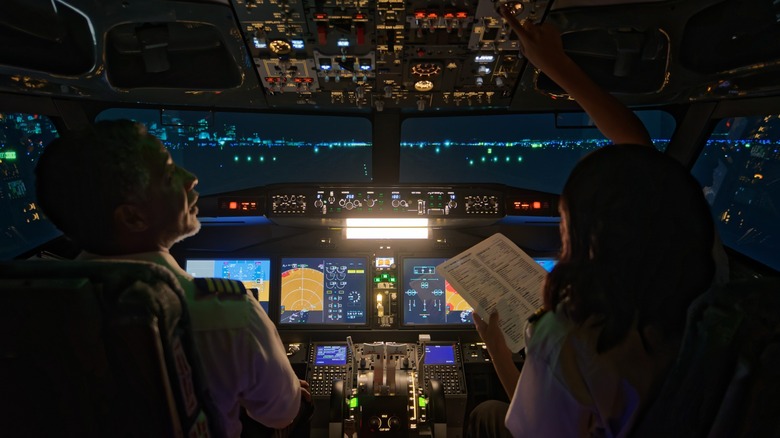How Do Pilots See at Night? The Truth About Flying in the Dark

The Role of Lighting in Nighttime Aviation
If you've ever looked up at the night sky and noticed a small blinking red light, you might have seen an anti-collision beacon. While it may seem like a minor detail from the ground, this light plays a crucial role in ensuring nighttime flying is as safe as possible. Unlike cars, airplanes don’t use headlights in the same way, and the skies don’t have streetlights. However, lighting remains a vital component of how pilots operate in the dark.
On the ground, runways and taxiways are illuminated with carefully arranged lights to help pilots align, taxi, and take off safely. Inside the cockpit, instrument panels are softly backlit, allowing pilots to read essential data without compromising their night vision. This visual support helps pilots stay oriented before they even leave the tarmac. But once the plane ascends into open airspace, things become more complex. The higher the altitude, the darker it gets, making it increasingly difficult to distinguish terrain.
Additionally, depth perception diminishes, and city lights on the ground can create confusing patterns. Sometimes, reflections or isolated lights appear to move when they’re not, leading to optical illusions that can affect a pilot’s sense of altitude or distance. Pilots are trained to recognize these illusions and avoid relying solely on their eyes. Instead, they depend on flight instruments such as the attitude indicator, altimeter, and heading display to maintain an accurate understanding of the aircraft's position and speed.
Navigating the Dark: Tools and Techniques
Pilots define night as the time between one hour after sunset and one hour before sunrise. This period includes civil twilight, when there's still enough ambient light to see the horizon and surrounding terrain. However, once the light fades completely, pilots shift to using instruments and advanced technology to navigate. They rely on a combination of traditional tools like VORs (Very High Frequency Omnidirectional Range stations) and modern systems like GPS. Some aircraft are equipped with infrared-enhanced vision systems that provide topographic data and thermal imaging to digitally reconstruct the terrain on screen. Others offer a full hemispherical view of the airspace ahead.
The goal of all these technologies is to help pilots maintain a strong sense of orientation—knowing where the aircraft is, how fast it's moving, and where the ground is in relation to the wings. Even with all this technology, communication with air traffic control (ATC) is essential for real-time updates on traffic, runway changes, and weather conditions.
Physiological Considerations
The Federal Aviation Administration (FAA) also takes physiological factors into account. At higher altitudes, reduced oxygen levels can affect a pilot’s vision, a condition known as mild hypoxia. To counter this, pilots are advised to use supplemental oxygen during night flights above 5,000 feet.
Training for Night Flying
Becoming a certified pilot involves extensive training, especially for night flying. In the U.S., the FAA requires private pilot candidates to log a minimum of three hours of night flight, including at least 10 takeoffs and landings after sunset. During this time, students learn to fly without the visual landmarks that make daytime flying easier. Even after earning their license, pilots aren't automatically cleared to fly at night. The pilot in command must complete at least three takeoffs and three landings to a full stop at night within 90 days, which can be done in a simulator.
Night training also teaches pilots to adjust their natural tendencies. For example, because the center of the retina doesn't perform well in low light, pilots are taught to use off-center scanning, looking slightly to the side of an object rather than directly at it. They also learn to protect their night vision by avoiding sudden exposure to bright light, which can take over 30 minutes to recover from. Fatigue is another concern, as our bodies are naturally wired to relax at night.
To combat this, pilots are encouraged to rest well before each flight. On long-haul commercial flights lasting more than eight hours, pilots are allowed to rest briefly, as most of the flying at cruising altitude is done on autopilot. Cockpit crews can take turns following a regulated rest schedule. A major part of flying is preparing for emergencies, and pilots are trained to stay calm and respond quickly when needed.
Post a Comment for "How Do Pilots See at Night? The Truth About Flying in the Dark"
Post a Comment